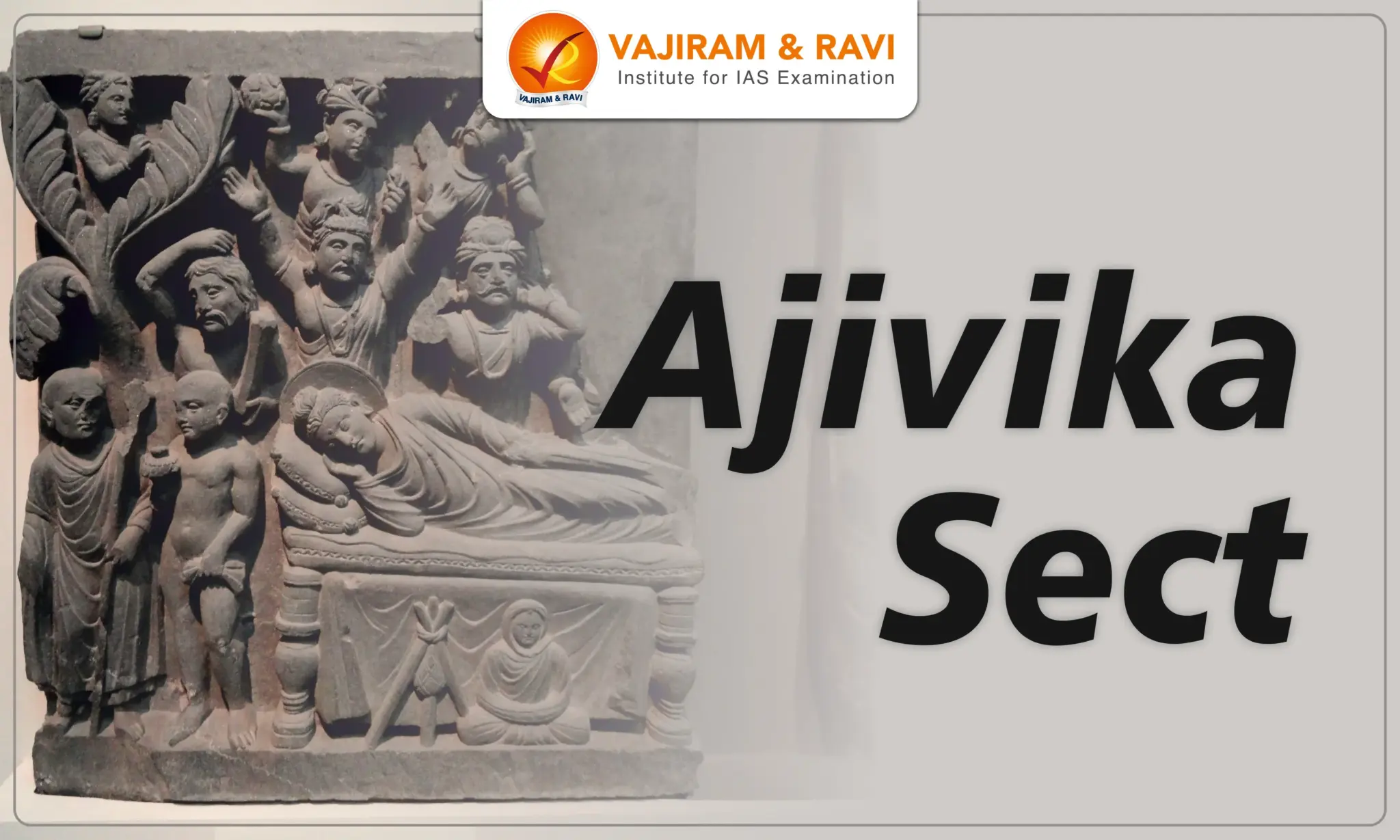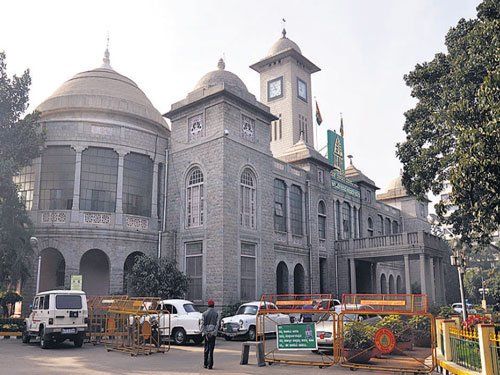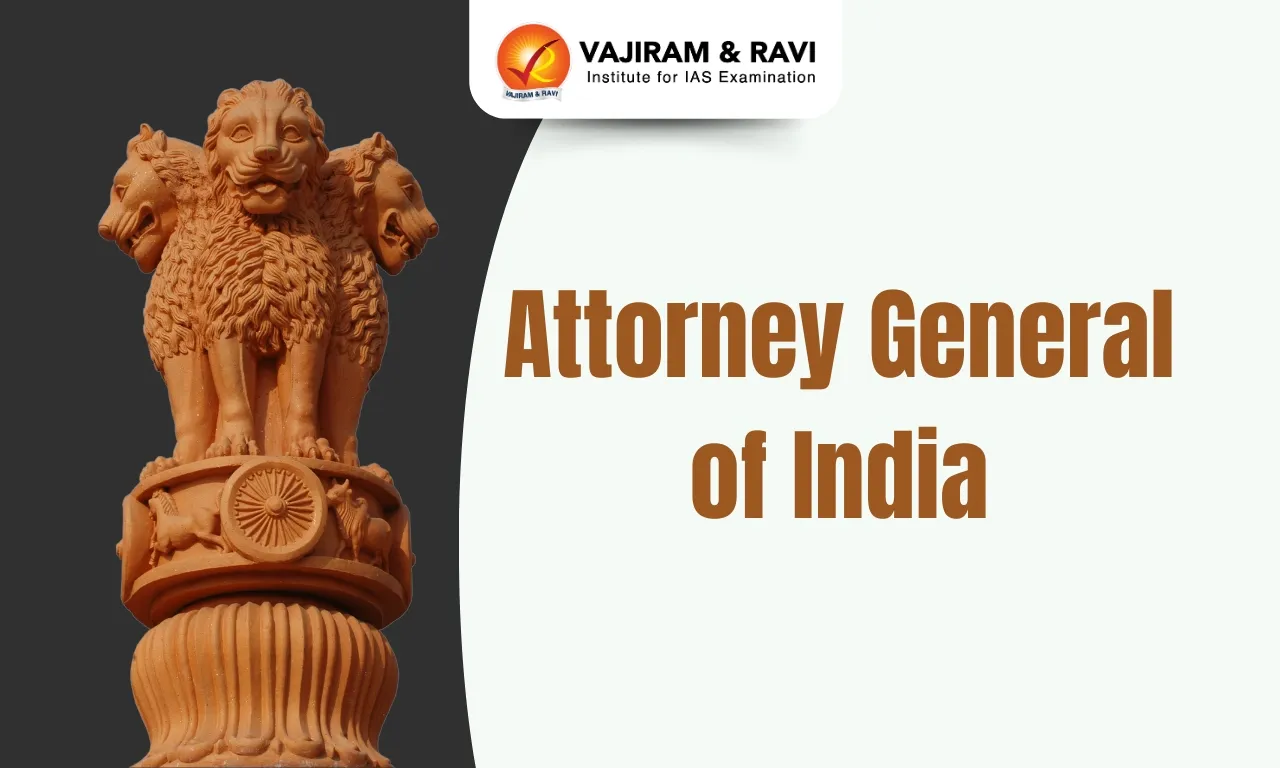The Ajivika Sect was an ascetic group that emerged in India around the same time as Buddhism and Jainism and lasted until the 14th century. Central to the Ajivikas' belief system was the idea that everything is predetermined by fate, or niyati, which suggested that human actions do not influence outcomes.
The Ajivika Sect reached its peak during the reign of Mauryan Emperor Bindusara. Notably, Ashoka, renowned for promoting Buddhism throughout India and Southeast Asia, spent much of his early life as an Ajivik. However, after this period, the Ajivika Sect lost its influence in northern India and gradually became insignificant.
Ajivika Sect Background
Ajivika Sect is an ancient ascetic group that emerged in India around the same time as Buddhism and Jainism, lasting until the 14th century. The Sect is characterized by its belief in total determinism regarding the transmigration of souls, or the cycle of rebirths
- Founder: The Ajivika Sect believed to be founded by Makkhali Goshala in the 5th century BCE, was contemporary with the Buddha and Mahavira. Along with Buddhism and Jainism, Ajivikism opposed the sacrificial rituals of Brahmanical religion and the monistic theories of the Upanishads, highlighting their common beliefs.
- The only remaining evidence of the lost Ajivika sect can be found in the Barabar Caves of Gaya. An inscription in the Sudama Cave indicates that Ashoka assigned four caves on Barabar Hill to Ajivika monks in 261 BCE.
- Additionally, another inscription on Nagarjuni Hill, attributed to Ashoka's grandson Dasaratha Maurya, reveals that the Ajivikas continued to receive imperial patronage from the Mauryan dynasty for an extended period.
Aijvika Sect Philosophy
The Aijvika sect offers a deterministic and materialistic framework, sharply contrasting with the karma and liberation concepts in other Indian traditions. Its focus on fate and rejection of individual agency highlights its significance as a distinct school of thought in ancient Indian philosophy.
- Fatalism: The Ajivika Sect's philosophy centres on the Niyati doctrine, emphasizing absolute fatalism and determinism—everything is preordained, and free will is denied.
- They believe fate guides individuals toward liberation (moksha) from the cycle of birth and rebirth, rejecting karma as a fallacy while affirming that each being possesses an atman, resonating with Vedic and Jain beliefs.
- Atomism: The Ajivika Sect proposed a theory of elements akin to the Vaisheshika school, positing that everything consists of tiny atoms, with characteristics arising from their combinations, all influenced by cosmic forces.
- Theism: The sect’s atheistic stance denies a creator deity and a mystical end for the cosmos, though it recognizes a material form of the soul (Atman), which undergoes numerous rebirths before reaching its predestined nirvana (salvation).
- Antinomian Ethics: Buddhist texts describe the Ajivika philosophy as antinomian, claiming no objective moral laws exist. All beings are seen as powerless, shaped by destiny and nature, experiencing joy and sorrow randomly.
- Despite this, accounts suggest Ajivikas led ascetic lives, often practising Ahimsa (non-violence) and vegetarianism.
Ajivika Sect Decline
After the decline of the Maurya Empire in the 2nd century BCE, the Ajivika Sect was mentioned only occasionally in Sanskrit literature and seemed to lose its prominence among other sects.
- By the Shunga period in the 1st century BCE, they had become insignificant in northern India, though stray references suggest they may have persisted until the 15th century.
- During the Gupta period, the Ajivika Sect’s practices had changed significantly, indicating a rapid decline.
- Moreover, the 14th-century text Sarva-Darshana-Sangraha does not mention the Ajivika Sect, further reflecting the dissolution of their sect.
Ajivika Sect UPSC PYQs
Question 1: With reference to the history of Indian rock-cut architecture, consider the following statements: (UPSC Prelims 2013)
- The caves at Badami are the oldest surviving rock-cut caves in India
- The Barabar rock-cut caves were originally made for Ajivikas by Emperor Chandragupta Maurya.
- At Ellora, caves were made for different faiths.
Which of the statements given above is/are correct?
- 1 only
- 2 and 3 only
- 3 only
- 1, 2 and 3
Answer: c
| Other Related Posts | |
| Schools of Indian Philosophy | Ajivika Sect |
| Yoga | Charvaka Philosophy |
Last updated on December, 2025
→ Check out the latest UPSC Syllabus 2026 here.
→ Join Vajiram & Ravi’s Interview Guidance Programme for expert help to crack your final UPSC stage.
→ UPSC Mains Result 2025 is now out.
→ UPSC Notification 2026 is scheduled to be released on January 14, 2026.
→ UPSC Calendar 2026 is released on 15th May, 2025.
→ The UPSC Vacancy 2025 were released 1129, out of which 979 were for UPSC CSE and remaining 150 are for UPSC IFoS.
→ UPSC Prelims 2026 will be conducted on 24th May, 2026 & UPSC Mains 2026 will be conducted on 21st August 2026.
→ The UPSC Selection Process is of 3 stages-Prelims, Mains and Interview.
→ UPSC Result 2024 is released with latest UPSC Marksheet 2024. Check Now!
→ UPSC Prelims Result 2025 is out now for the CSE held on 25 May 2025.
→ UPSC Toppers List 2024 is released now. Shakti Dubey is UPSC AIR 1 2024 Topper.
→ UPSC Prelims Question Paper 2025 and Unofficial Prelims Answer Key 2025 are available now.
→ UPSC Mains Question Paper 2025 is out for Essay, GS 1, 2, 3 & GS 4.
→ UPSC Mains Indian Language Question Paper 2025 is now out.
→ UPSC Mains Optional Question Paper 2025 is now out.
→ Also check Best IAS Coaching in Delhi
Ajivika Sect FAQs
Q1. What is the Ajivika Sect?+
Q2. Who was the founder of Ajivika Sect?+
Q3. What is the central belief of the Ajivika Sect regarding fate?+
Q4. What does the Ajivika Sect believe about the soul (Atman)?+
Q5. When did the Ajivika Sect begin to decline in prominence?+
Tags: ajivika sect quest

















